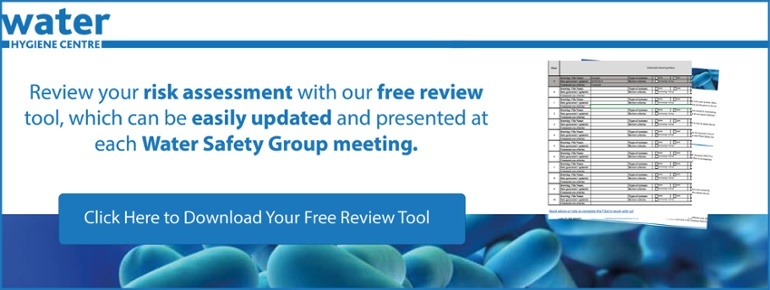HSG 274 is a technical guidance document published by the HSE for dutyholders, employers, and those in control of premises with health and safety responsibilities for others to assist them in complying with their legal duties.
This publication comes in three parts:
- Part 1: The control of Legionella bacteria in evaporative cooling systems,
- Part 2: The control of Legionella bacteria in hot and cold water systems,
- Part 3: The control of Legionella bacteria in other risk systems.
In this blog, we look at the changes to HSG274 Part 1 2024.
HSG274 2013
The previous edition, published in 2013, was the first time the document had been published. The current additions are further information on DPD No. 1 testing methodology and the effect that cooling water pH has on the efficacy of halogen-based biocides such as chlorine and bromine. Nearly all organisations using this DPD No. 1 testing method, be it by their staff or a specialist contractor, rely on this to ensure that they have control of the dosing regime for their system(s).
Oxidising biocides and DPD No 1 Tests
Oxidising biocides are commonly used to control microbiological activity within evaporative cooling systems to ensure that the TVC of Aerobic bacteria remains no greater than 1×104 cfu/ml (colony-forming units per millilitre). They are normally applied through an automated dosing system which may be controlled by Redox or amperometric measurement to ensure consistent dosing levels.
In the 2024 version of HSG274 Part 1 Section 1.6, an additional narrative has been included in the Info box1.5: Biocide types and application.
“When using the DPD No 1 methodology it is essential that the result is pH-adjusted to account for the loss of hypochlorous and hypobromous acids into their less effective hypochlorite and hypobromite ions, when higher pH levels are present.”
DPD No 1 test is an indicator used in the colorimetric determination of the concentration of oxidising biocides. DPD No 1 reacts to the presence of strong biocidal species, including free chlorine and total bromine (free and combined).
Standard test methods using DPD will not distinguish between chlorine and bromine.
DPD free and total chlorine test methods will not be specific for chlorine or bromine. To avoid any doubt, halogen test residuals are usually reported as ppm of chlorine (Cl2) if the biocide contains a mixture of both bromine and chlorine .
HSG274 Part 1, 2024; Info Box 1.5 further advises;
The oxidising biocides commonly used in cooling water are those based on compounds of the halogens chlorine and bromine and may be supplied as solid tablets, granules, powder, or as solutions. On dilution, these compounds form the free halogen species hypochlorous acid (HOCl), hypobromous acid (HOBr), hypochlorite ion (OCl), and hypobromite ion (OBr) in a pH-dependent equilibrium.
This pH-dependent relationship is important because the hypochlorous and hypobromous acids are more active biocides than the hypochlorite and hypobromite ions and the concentrations of these active acids decline with rising pH. As the pH of cooling water rises and becomes increasingly alkaline, chlorine compounds tend to become less biocidally active and slower acting, whereas bromine compounds retain their activity at higher pH levels but are still affected. For this reason, caution should be exercised when dosing systems with oxidising biocides to ensure the correct concentration is reached, accounting for the pH of the water.
Halogen-based biocides
Halogen-based biocides are typically applied to establish a measurable reserve using DPD No 1, in the range 0.5–1.0 mg/l as Cl2 or 1.0–2.0 mg/l as Br2. In some circumstances, it may be possible to maintain good microbial control at a lower halogen reserve, and in other circumstances, such as more alkaline pH conditions, it may be necessary to increase the halogen reserve to compensate for the reduction in biocidal activity. The effectiveness of the microbial control should be monitored using weekly dip slides and periodic Legionella analysis (see the control values in Tables 1.10 and 1.11) and adjust the target biocide reserves accordingly.
Other Considerations
The table below shows the direct relationship between chlorine and PH.
(Illustration courtesy of PWTAG Technical Note (TN60)
Conclusion
The relationship between cooling water pH and the oxidising biocide(s) you are using as part of your control regime must be understood so that pH adjustment to results can be made when higher pH levels are present which will reduce the efficacy of oxidising biocides. This will ensure that your control regime remains effective, particularly in a high-risk system such as evaporative cooling systems.
Check out our FAQ page around Legionella, water hygiene, and waterborne pathogens
If you would like further advice or guidance on HSG274 please click here to get in touch with one of our consultants.
Editors Note: The information provided in this blog is correct at the date of original publication – May 2024.
© Water Hygiene Centre 2024










